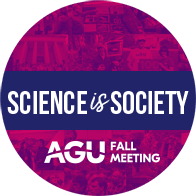In 2021, wildfire smoke stretched across the United States, bringing hazardous air quality conditions along with it. But new research suggests that smoke might not be the only way that fires are contributing to air pollution.
Instead, by altering the nitrogen cycle in soils, wildfires could be bolstering emissions of two important air pollutants, nitrogen oxide (NO) and nitrous oxide (N2O). NO is a precursor for tropospheric ozone, a harmful component of smog. N2O, on the other hand, is a potent greenhouse gas.
Though the extent to which wildfires affect these soil emissions is still being uncovered, the mechanism behind the phenomenon is becoming more clear. Elizah Stephens, a Ph.D. student at the University of California, Riverside (UCR), explained that it begins once fire incinerates local vegetation and deposits it back to the earth as nitrogen-rich ash. Recovering microbial communities in the soil can then metabolize some of this nitrogen through a process called nitrification. NO and N2O can both be formed as by-products of this process.
Nitrification can occur naturally in unburned ecosystems, too. However, altered soil conditions in fire-affected areas could “have some impacts on the way that these microbes are processing nitrogen,” said Peter Homyak, an assistant professor at UCR and senior author of the study. For example, nitrification is more favored in alkaline soils, increasing the likelihood that NO and N2O are produced.
These microorganisms also “have access to all this nitrogen without any competition from plants,” added Stephens, who will present the research on 16 December at AGU’s Fall Meeting 2021. In other words, after a fire, “there may not be much keeping [the microbes] in check in terms of their emissions.”
Preliminary evidence also suggests that fire’s impact on these gases might last long after the flames die down, drawing out its effect on local air quality. Multiyear records collected following recent Southern California fires have shown Stephens, Homyak, and their collaborators that it can take years before the soil—and the microbes residing within it—returns to anything resembling its preburned state.
“It’s most likely the same for the emissions, which go along with the [microbial] community structure,” Stephens explained.
“One of the Hardest Things to Quantify”
Prior to Stephens and Homyak’s work, studies focusing on postfire impacts on nitrogen have mainly tried to quantify how much of it ends up in local waterways because of its negative impact on water quality. However, Homyak pointed out that these studies often show nitrogen budget imbalances of around 50%. “They don’t know where the other half of the nitrogen is going,” he said.
Some researchers have hypothesized that gaseous soil emissions could be a possibility. However, “nitrogen gas losses are one of the hardest things to quantify at large scales,” leading to a lack of measurements, said Erin Hanan, an assistant professor at the University of Nevada, Reno who was not involved in the study.
Understanding the mechanisms that influence where the nitrogen goes is really important if we want to make predictions about what conditions will happen in the future.
This difficulty in quantification highlights the importance of Stephens and Homyak’s work. “[They’re] focusing on a process that needs a lot more research,” said Hanan. “Understanding the mechanisms that influence where the nitrogen goes after fire is really important if we want to make predictions about water quality and greenhouse gas fluxes in the future,” especially in light of climate change.
Future work from Stephens will include quantifying to what extent NO and N2O fluxes are affected by fires and how that may change on the basis of burn severity and soil moisture—both of which are affected by increasing temperatures and drought.
“If we could make sense of how burn severity and these trace gas emissions work together, that could be helpful for making better [land] management decisions,” said Stephens.
—Krystal Vasquez (@caffeinatedkrys), Science Writer


